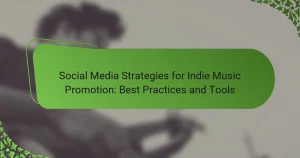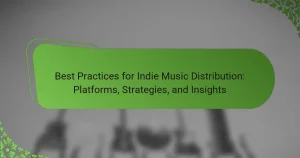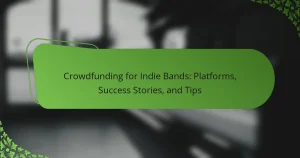Music licensing offers indie artists significant revenue opportunities and exposure, but navigating the complexities can be challenging. Key components include copyright, synchronization rights, and performance rights. Artists can monetize their work through media placements and royalties while facing hurdles like legal requirements and limited resources. Effective strategies involve building an online presence, networking, and understanding licensing agreements.
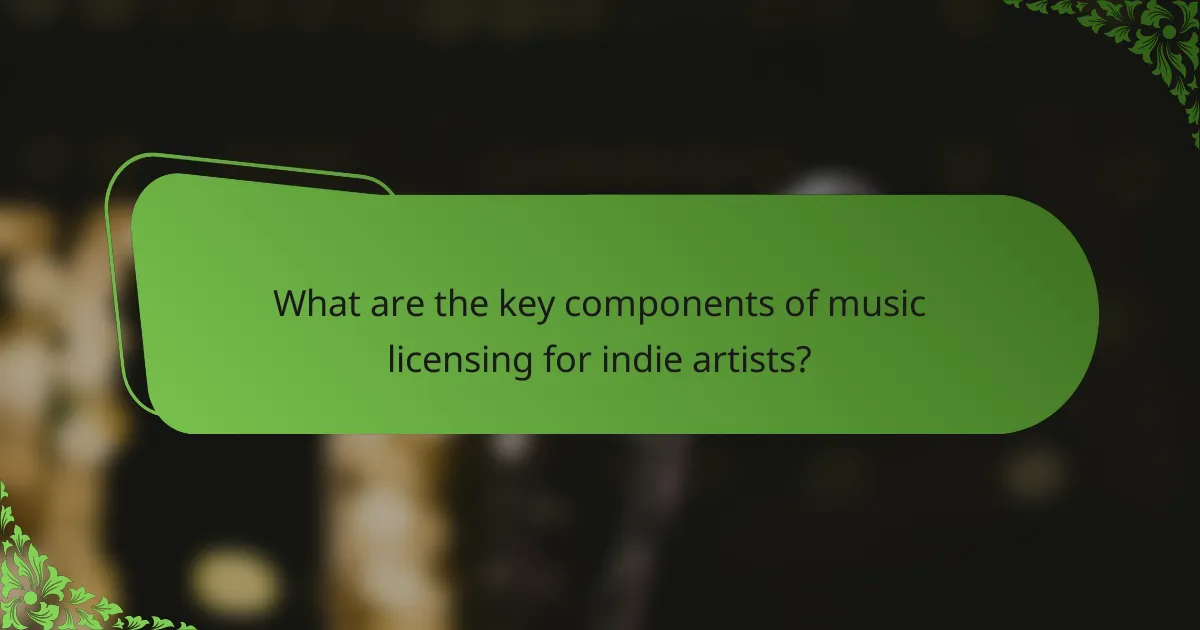
What are the key components of music licensing for indie artists?
Music licensing for indie artists involves several key components including copyright, synchronization rights, and performance rights. Understanding these elements enables artists to protect their work and monetize effectively.
Copyright grants protection to the creator, ensuring they have exclusive rights to their music. Synchronization rights allow artists to license their music for use in visual media, such as films and commercials. Performance rights pertain to public performances of the music, which can generate royalties through performance rights organizations.
Navigating these components can be challenging due to complex legal frameworks and the need for negotiation skills. However, the benefits include increased revenue opportunities and wider exposure for indie artists.
How does music licensing differ for indie artists compared to major labels?
Music licensing for indie artists often involves more flexibility and lower costs than for major labels. Indie artists typically retain more control over their music and can negotiate terms directly. Major labels, however, have established relationships and resources, which can simplify licensing but may limit artist autonomy. Indie artists face challenges such as limited budgets and fewer industry connections, impacting their licensing opportunities. In contrast, major labels benefit from extensive networks and marketing power, allowing them to secure broader distribution and higher revenue from licensing deals.
What are the common types of music licenses available?
Common types of music licenses include synchronization, mechanical, performance, and master licenses. Each type serves distinct purposes for indie artists in the music industry.
Synchronization licenses allow music to be used in visual media, such as films or commercials. Mechanical licenses cover the reproduction of music on physical formats like CDs or vinyl. Performance licenses are necessary for public performances of music, while master licenses grant rights to the original sound recording. Understanding these licenses helps indie artists navigate rights and royalties effectively.
Which organizations manage music licensing and rights?
Organizations that manage music licensing and rights include ASCAP, BMI, SESAC, and SoundExchange. These entities ensure that artists receive royalties for their work. ASCAP and BMI primarily handle performance rights, while SESAC is known for its selective membership. SoundExchange focuses on digital performance rights, particularly for non-interactive streaming. Each organization plays a crucial role in protecting the interests of indie artists in the music industry.
What is the role of performance rights organizations in music licensing?
Performance rights organizations (PROs) play a crucial role in music licensing by ensuring artists receive royalties for public performances of their work. They collect licensing fees from venues and businesses that play music, then distribute these funds to the respective artists. PROs simplify the licensing process, allowing indie artists to focus on creating music rather than managing rights. They also provide valuable resources and support, helping artists navigate the complexities of music licensing. This support is essential for indie artists who may lack the resources to handle these legal and financial aspects independently.
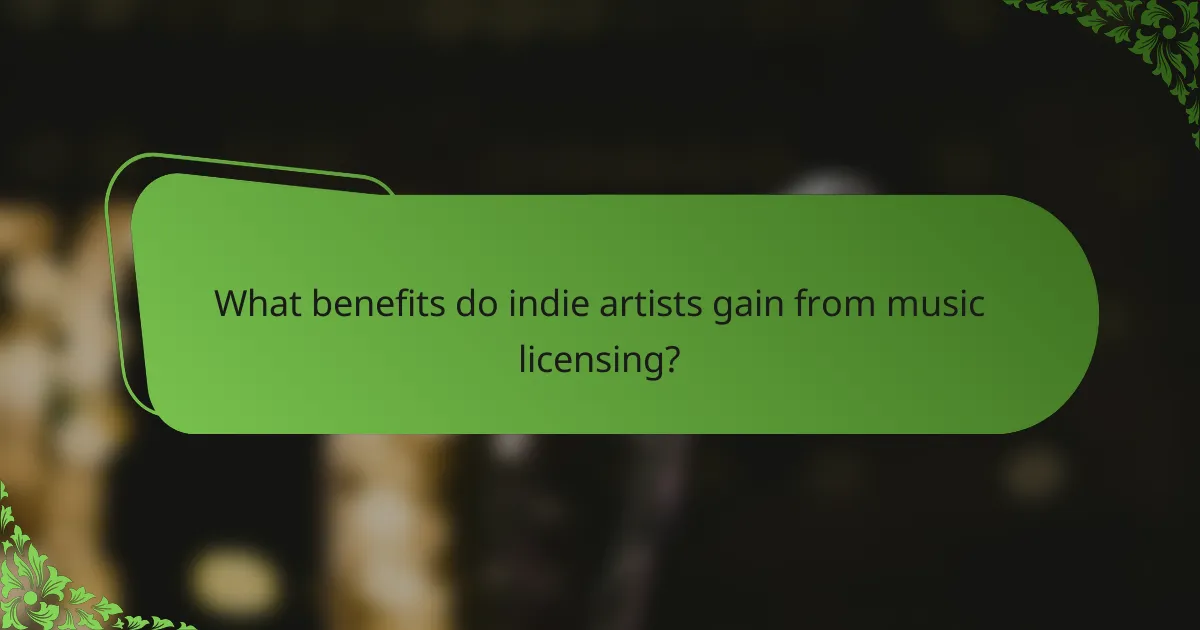
What benefits do indie artists gain from music licensing?
Indie artists gain significant financial and exposure benefits from music licensing. Licensing allows artists to earn income through placements in media, increasing their visibility and audience reach. It also opens networking opportunities with brands and producers, enhancing career growth. Additionally, licensing can lead to passive income streams through royalties, providing long-term financial stability.
How does music licensing generate revenue for indie artists?
Music licensing generates revenue for indie artists through various channels such as synchronization fees, performance royalties, and mechanical royalties. These income streams allow artists to monetize their music in TV shows, films, commercials, and streaming platforms. Licensing agreements can provide consistent revenue, enabling artists to sustain their careers. Additionally, successful licensing can enhance an artist’s visibility and lead to further opportunities.
What are the promotional advantages of licensing music for indie artists?
Licensing music offers indie artists promotional advantages such as increased exposure and revenue opportunities. By placing music in films, commercials, or video games, artists reach wider audiences. This exposure enhances brand recognition and builds a loyal fan base. Additionally, licensing can generate passive income through royalties. Collaborations with brands can also lead to unique marketing campaigns, further amplifying an artist’s reach. Overall, music licensing serves as a strategic tool for indie artists to elevate their careers.
How can music licensing enhance an indie artist’s credibility?
Music licensing can significantly enhance an indie artist’s credibility by validating their work and expanding their reach. It establishes professionalism, signaling to industry stakeholders that the artist takes their craft seriously. Licensing also opens opportunities for placement in media, increasing visibility and potential revenue. Furthermore, it can lead to collaborations with established brands, further boosting the artist’s reputation.
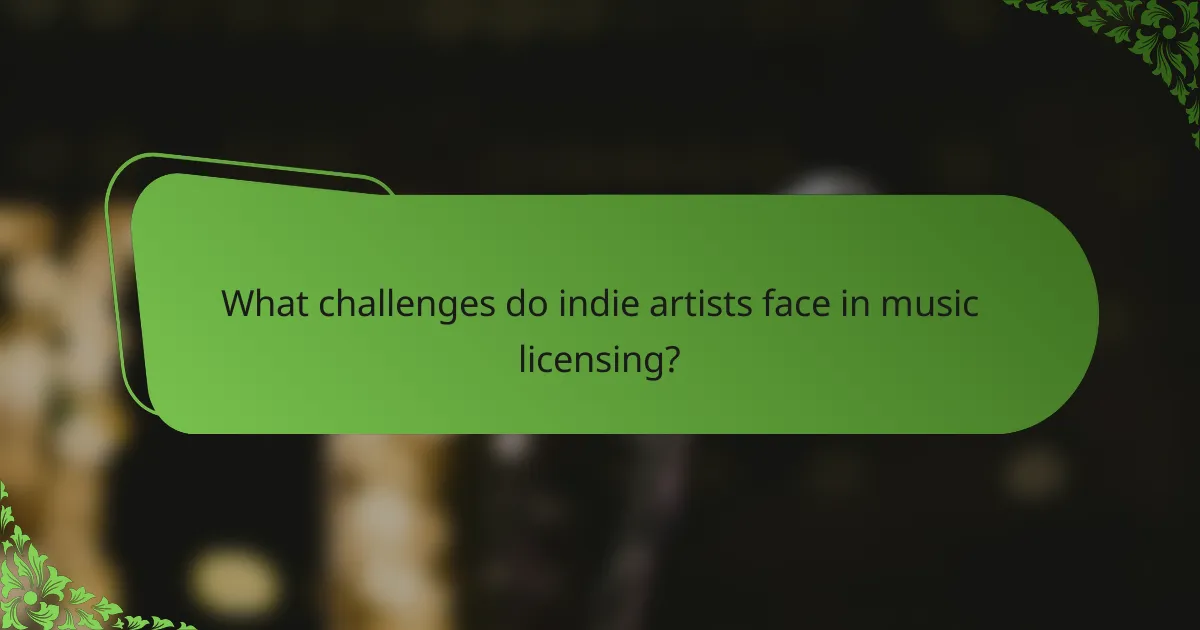
What challenges do indie artists face in music licensing?
Indie artists face significant challenges in music licensing, including limited resources, complex legal requirements, and lack of industry connections. These hurdles can hinder their ability to monetize their music effectively. Many indie artists struggle to navigate the licensing landscape, which often favors established labels. Additionally, the costs associated with securing licenses can be prohibitive, impacting their financial viability. The need for legal expertise to handle contracts and negotiations presents another barrier, making it difficult for artists to protect their work.
What are the common misconceptions about music licensing for indie artists?
Many misconceptions exist about music licensing for indie artists, often leading to confusion. One common belief is that licensing is only necessary for major labels, but all artists, including independents, must secure rights for their music. Another misconception is that licensing is prohibitively expensive; however, many affordable options are available. Some indie artists think they can use any music freely, not realizing that copyright laws protect most works. Additionally, there is a belief that once a song is licensed, it can be used indefinitely, while licenses often have time limits. Lastly, some artists underestimate the importance of sync licensing, which can provide significant revenue opportunities through media placements.
How can indie artists navigate the complexities of licensing agreements?
Indie artists can navigate licensing complexities by understanding key agreements and seeking professional advice. They should familiarize themselves with types of licenses, such as mechanical and synchronization licenses, to protect their work. Collaborating with music attorneys or licensing experts can provide clarity and prevent costly mistakes. Additionally, leveraging platforms that simplify licensing processes can enhance their ability to manage these agreements effectively.
What are the potential pitfalls of music licensing for indie artists?
Indie artists face several potential pitfalls in music licensing, including financial strain, legal complexities, and loss of creative control. Misunderstanding licensing terms can lead to unanticipated costs and disputes. Additionally, navigating the intricate landscape of copyright laws can be overwhelming. Limited resources may hinder an artist’s ability to fully leverage licensing opportunities, impacting their revenue potential.
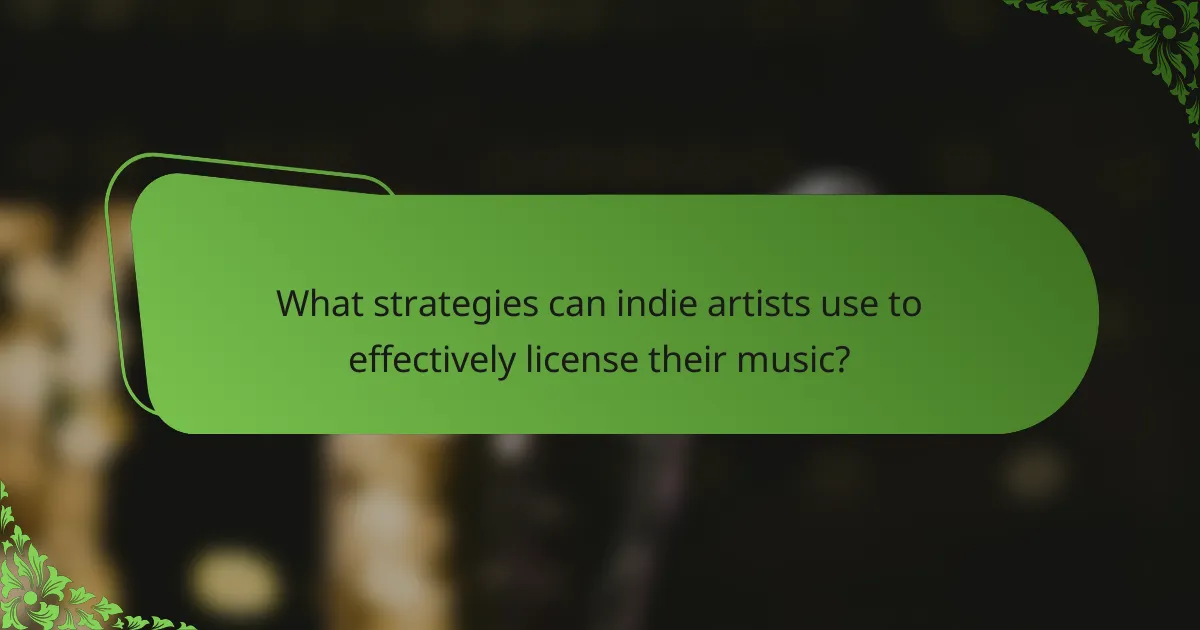
What strategies can indie artists use to effectively license their music?
Indie artists can effectively license their music by utilizing several key strategies. First, they should build a strong online presence to showcase their work and attract potential licensees. Networking with industry professionals can open doors for collaboration and licensing opportunities. Additionally, artists can leverage music libraries and licensing platforms to distribute their tracks widely. Understanding the legal aspects of licensing, including copyright and agreements, is crucial for protecting their rights. Finally, creating high-quality recordings enhances the chances of attracting interest from licensors.
How can indie artists leverage digital platforms for music licensing?
Indie artists can effectively leverage digital platforms for music licensing by utilizing online marketplaces, social media, and streaming services. These platforms provide exposure, connect artists with potential licensors, and streamline the licensing process.
Digital marketplaces like AudioJungle and Pond5 allow artists to upload their music for licensing opportunities, offering a straightforward way to monetize their work. Social media platforms enable artists to promote their music and network with industry professionals, increasing visibility and potential licensing deals. Streaming services such as Spotify and Apple Music can also enhance an artist’s reach, making their music more accessible for licensing in various media projects.
Additionally, maintaining a strong online presence through consistent branding and engagement can attract more licensing opportunities. By showcasing their unique sound and style, indie artists can stand out in a competitive market.
Which best practices should indie artists follow when negotiating licenses?
Indie artists should prioritize transparency, research, and clear communication when negotiating licenses. Understanding industry standards and seeking legal advice can enhance their negotiating power.
1. Know your rights and the scope of the license.
2. Research comparable licensing deals in your genre.
3. Be clear about your expectations and limitations.
4. Consider the long-term implications of the agreement.
5. Seek professional guidance if needed.
What resources are available for indie artists to learn about music licensing?
Indie artists can access various resources to learn about music licensing. Online platforms like Coursera and Udemy offer courses specifically on music licensing. Websites such as the American Society of Composers, Authors and Publishers (ASCAP) provide valuable guides and articles. Additionally, books like “Music Licensing: A Practical Guide” offer in-depth insights. Networking with industry professionals at workshops and webinars can also enhance understanding.
What common mistakes should indie artists avoid in music licensing?
Indie artists should avoid common mistakes in music licensing, such as neglecting to read contracts thoroughly, failing to register their works, and overlooking the importance of obtaining proper permissions. These errors can lead to legal challenges and loss of revenue. Additionally, not understanding the different types of licenses, such as synchronization and mechanical licenses, can hinder an artist’s ability to monetize their music effectively. Lastly, underestimating the value of their music can result in unfavorable licensing agreements.
